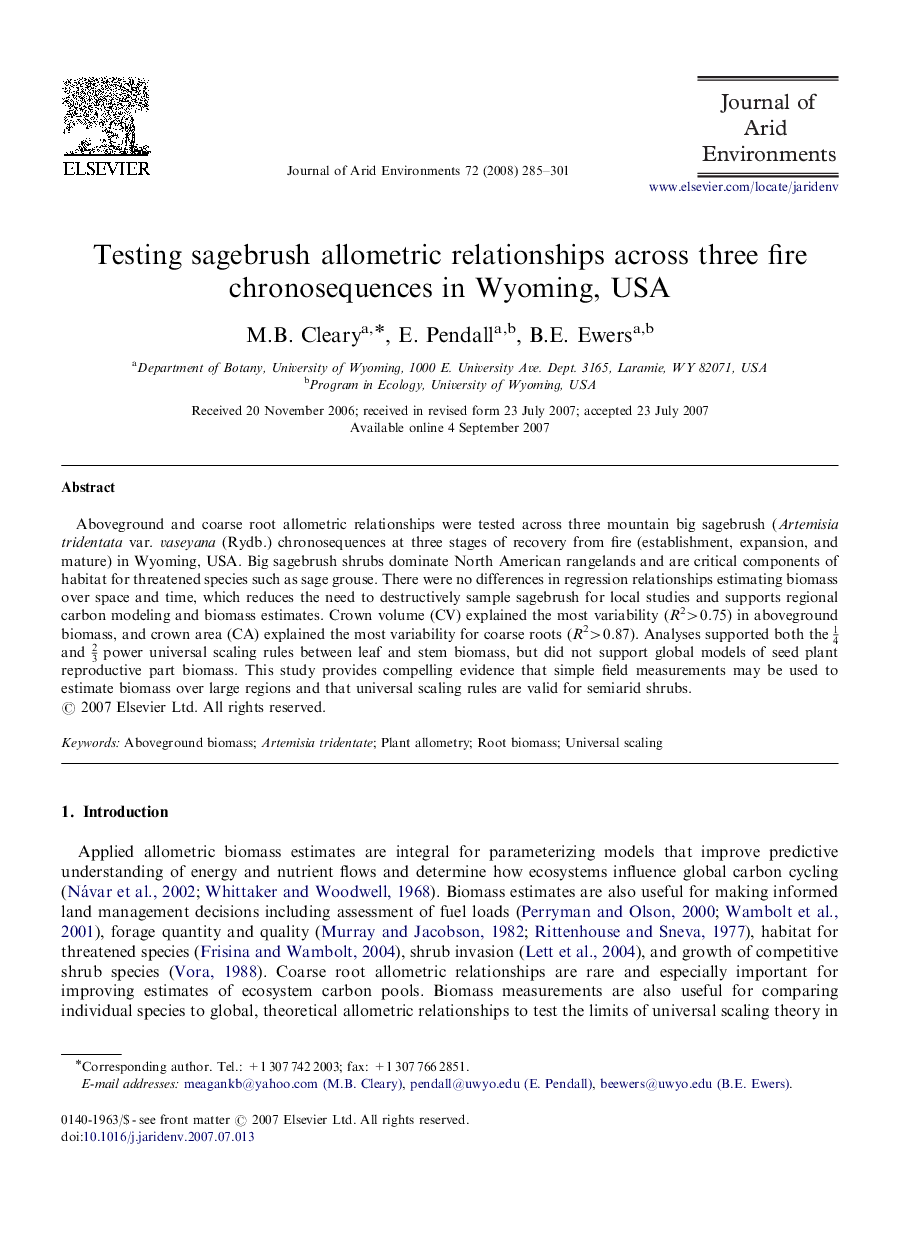| Article ID | Journal | Published Year | Pages | File Type |
|---|---|---|---|---|
| 4394193 | Journal of Arid Environments | 2008 | 17 Pages |
Aboveground and coarse root allometric relationships were tested across three mountain big sagebrush (Artemisia tridentata var. vaseyana (Rydb.) chronosequences at three stages of recovery from fire (establishment, expansion, and mature) in Wyoming, USA. Big sagebrush shrubs dominate North American rangelands and are critical components of habitat for threatened species such as sage grouse. There were no differences in regression relationships estimating biomass over space and time, which reduces the need to destructively sample sagebrush for local studies and supports regional carbon modeling and biomass estimates. Crown volume (CV) explained the most variability (R2>0.75) in aboveground biomass, and crown area (CA) explained the most variability for coarse roots (R2>0.87). Analyses supported both the 14 and 23 power universal scaling rules between leaf and stem biomass, but did not support global models of seed plant reproductive part biomass. This study provides compelling evidence that simple field measurements may be used to estimate biomass over large regions and that universal scaling rules are valid for semiarid shrubs.
